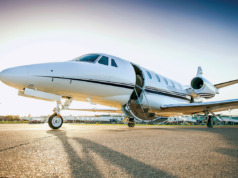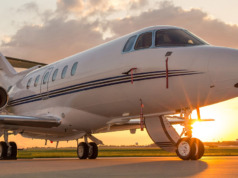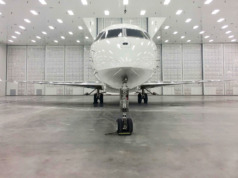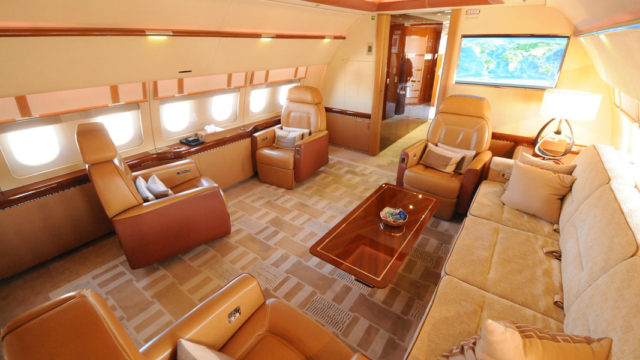
Business jets save time and give you direct access to more than 5,000 airports in the United States alone – more than ten times the number served by commercial airlines. Each aircraft make and model is designed to satisfy specific, defined trip profiles: from light jets carrying up to six comfortably on trips of 1,200 miles or less, to long-range, large-cabin jets and airliners outfitted as business jets for longer intercontinental trips.
Large-cabin, long-range business jets have fared best in the recent recession, holding their value among the growing number of international executive travelers. For only large cabin aircraft offer enough space for separate office and rest accommodations during the 12 hours required to fly nonstop from Dallas to Moscow, or the 13 hours from San Francisco to Chengdu. And they offer almost unlimited interior customization options.
Until fairly recently, only a few select companies and Ultra High Net Worth Individuals (UHNWIs) purchased and refurbished airliners. By 1998, The Boeing Company recognized the strong – albeit limited – demand for new, modified, and properly outfitted 737 airliners as corporate jets, and created the BBJ: the Boeing Business Jet.
Today, with auxiliary fuel tanks extending nonstop range to almost 7,000 miles, the BBJ and its competitor Airbus AC319 offer the business jet owner performance far beyond the original airline design criteria. There now is a full range of business jets based on the Boeing 700 series and AC300 series of aircraft, a category now referred to as “bizliners.”
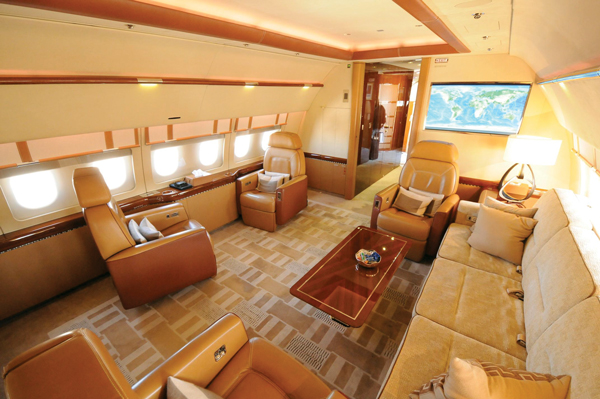
While understandably, there is an emotional component to acquiring an airliner for use as a business jet, the purchase should be handled with the same rational business discipline as with any other business asset.
The Acquisition Process
Acquiring a traditional business jet, regardless of size and range, may vary somewhat from model to model, but the process is relatively consistent. Acquiring an airliner for use as a business jet – a bizliner – is another matter entirely.
There are three ways to do so. You can buy a pre-owned aircraft already configured for corporate use, or a pre-owned airliner available for conversion and refurbishment. Or you can acquire a green (factory-new) big jet directly from Boeing or Airbus and arrange for a second-party completion center to outfit it to your specifications.
With respect to the third option, while both manufacturers offer experienced professional sales executives and support personal to guide you through that complex process, many buyers prefer to use an independent acquisition consultant/broker and legal counsel. As with any high-priced capital asset, you can expect some negotiation to help ensure that you acquire the right aircraft at a fair price. Recognize that the vast majority of these aircraft are sold to commercial airlines, which have extensive teams of full-time specialists working with senior management to complete these lease or acquisition transactions. They don’t leave negotiations with Boeing or Airbus to the inexperienced – and neither should you.
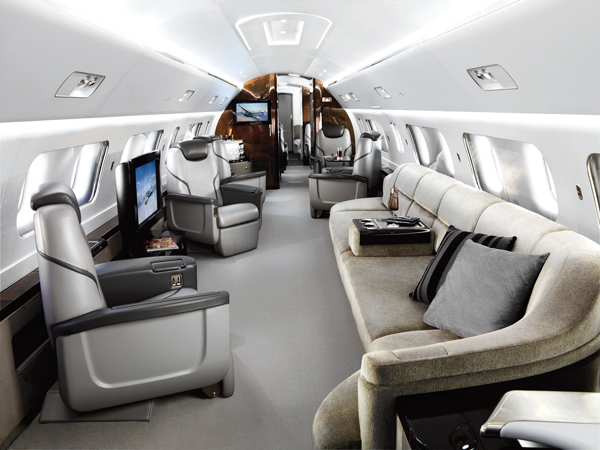
Some pre-owned aircraft brokers have their own staff to oversee refurbishment, but buyers may prefer to retain a dedicated completion consultant, like Aerospace Concepts, for such complex engineering, design, and installation projects.
If a refitted airliner meets your travel requirements, don’t let the scale dissuade you. There are firms with the expertise and experience to see you safely and cost effectively through the process of buying and refurbishing a pre-owned Boeing or Airbus bizliner.
The Challenge of Market Fluctuation Forecasting
The bizliner marketplace is fundamentally different from corporate airplane markets. Freestream Aircraft president, Alireza Ittihadieh, says: “With the elasticity of a giant rubber band, the airliner market is generally characterized by large swings in available inventory, disparate and irrational asking prices, undefined and delayed delivery dates, and onerous acquisition terms.”
To further his observations, airline patterns of buying and selling aircraft also can mirror their frequent passenger fare-wars: highly susceptible to macro-economic cycles and an “airline-passenger-as-a-commodity” mentality. Add to that the complex buying process and jet fuel price fluctuations, and highly elastic indeed describes the airliner-as-corporate jet marketplace.
The airliner market is very closely traded by a few select companies typically interested in multiple airplane and engine transactions, new airline delivery position trades, leasing opportunities, or airline-specific fleet planning strategies. Maintenance cycles, lease terms, and airplane delivery schedules contribute to wide fluctuations in airline demand for equipment. Airlines also are irrevocably bound by their individually tailored government-approved commercial aircraft operating specifications, which define the specific aircraft and engine combinations that each is allowed to operate. The B777, for example, has 18 different available engine combinations. An expanding airline in need of as few as six B777-200ERs with Pratt &Whitney 4000 engines could pay dearly for the few available jets so configured at that time, causing prices to temporarily skyrocket. Or those six jets may be delivered to storage if there is no ready buyer.
These factors make market value fluctuations very difficult to forecast: there may be no pre-owned aircraft inventory for sale one day, but six the next.
Understanding the airliner marketplace puts you – the single airliner buyer – in a strong position. Commercial airline operators may assume that all aircraft buyers are other fleet operators, which can work in your favor. Most airlines are able to release any one of their airplanes at any time – they just need a credible and profitable reason to do so. An airline’s initial inflexibility juxtaposed with the one-aircraft buyer’s complete flexibility can result in a buyer’s advantage. A cash transaction which can be completed quickly and easily often induces a selling airline to act.
Whether you are buying new or used, it’s best to assemble and work with a team of expert acquisition specialists, who will help ensure that your bizliner meets your specific requirements, and is purchased at the optimal market price. BAA
James Mose focused on bizliner transactions at Freestream Aircraft USA. Formerly the founder of White Mountain Aviation, and a Client Aviation Manager for TAG Aviation, he flew for the USAF, Northwest Airlines, and International Paper Company.


